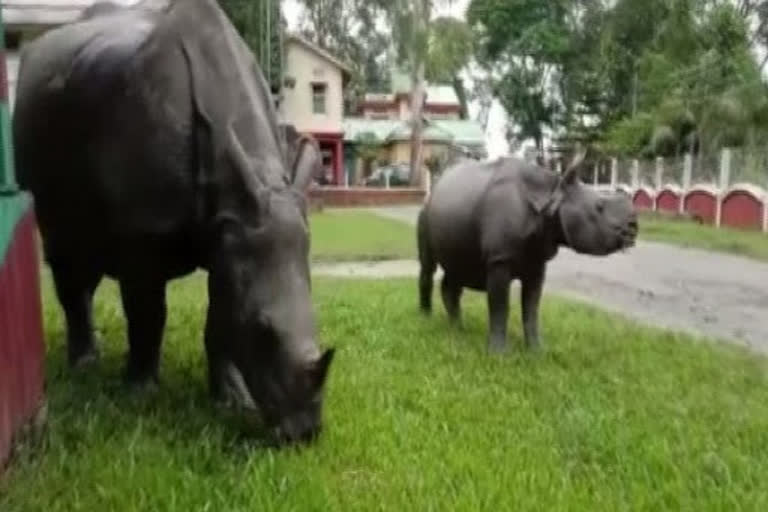Hyderabad:The World Rhino Day is celebrated every year on 22 September to celebrate the world’s five rhinoceros species, and to reflect on the challenges facing them.
This special day provides the opportunity for cause-related organizations, Non-Governmental Organisation (NGO), zoos, and public to celebrate rhinos in their own unique ways.
Of the five rhino species living in Africa and Asia, three are listed by the IUCN as Critically Endangered: Javan Rhinos (Rhinoceros sondaicus), Sumatran rhinos (Dicerorhinus sumatrensis) and black rhinos (Diceros bicornis). Meanwhile, White rhinos (Ceratotherium simum) are considered near threatened, and greater one-horned rhinos (Rhinoceros unicornis) vulnerable to extinction.
In 2010 it was apparent that the plight of the Rhinoceros wasn’t known to people around the world, and most people didn’t know just how close we were coming to total extinction of this majestic species. So critical is the condition of the species that less than 30,000 rhinos were alive in the world at that time. So it was that the WWF-South Africa announced World Rhino Day in an effort to save the world’s remaining rhinos, an effort that grew to be an unprecedented success.
World Rhino Day celebrates Rhinoceroses and generates awareness of issues regarding their well-being. In recent years, rhinos have been threatened by poaching, urbanization and pollution, which have left certain rhino species on the brink of extinction while leaving other species severely endangered.
In 2011, one Lisa Jane Campbell fired off an email to Rhishja, a fellow lover of rhinos who wanted to see the five species of rhinos in the world continue to thrive and be there for future generations to enjoy. World Rhino Day, at the hands of these two incredible women, has become a phenomenon that spreads across the globe, and is a resounding success.
Also read:IIT Madras develop nano-coated magnesium alloys to repair bone fractures
There’s still work to do though, as there are only about 100 Sumatran Rhinos left in the world, and between 60-65 Javan rhinos, so while the rhino populations of Africa are doing well there are still more to save.
The Chinese government announced on Oct. 29, 2018 that it had legalized the “controlled” use of rhino horn and tiger bone for medical use and cultural purposes in the country. Under the new regulations, rhino horn and tiger bone from farmed animals would be allowed to be used for medicinal purposes, overturning a ban put in place in 1993.
On the other hand Nepal has enjoyed extraordinary success at boosting the population of its greater one-horned rhinos. But this past year brought a reckoning. In March 2019, a Buzzfeed investigation revealed cases of alleged human rights violations around Chitwan National Park, highlighting how sweeping legal powers bestowed upon park rangers can negatively affect the lives of people living around protected areas.
From a population of barely 75 in 1905, there were over 2,700 Indian rhinos (Rhinoceros unicornis) by 2012, according to the World Wide Fund for Nature–India (WWF-India), a global wildlife advocacy. The figure has now gone well past 3600 in 2020.
In 2012, more than 91 per cent of Indian rhinos lived in Assam, according to WWF-India data. Within Assam, rhinos are concentrated within Kaziranga national park, with a few in Pobitara wildlife sanctuary. Kaziranga is home to more than 91 per cent of Assam’s rhinos and more than 80 per cent of India’s count with a 2015 population census by Kaziranga park authorities revealing 2,401 rhinos within the park.
The park may have reached its carrying capacity and might not be able to support any more rhinos. In order to address the threat, rhinos from overcrowded areas, like Kaziranga National Park and Pabitora Wildlife Sanctuary, are being moved to other protected areas where they can breed.
